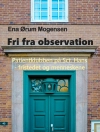In ‘The Atlas of Ancient and Classical Geography, ‘ Samuel Butler masterfully synthesizes cartographic precision with literary flair, crafting a rigorous examination of the ancient world through a geographic lens. This work stands out for its detailed maps and illustrations that elucidate historical contexts, allowing readers to navigate the complexities of geography in relation to the classical literature and historical events of antiquity. Butler’s scholarly prose is both accessible and engaging, making it a vital resource for students of history, archaeology, and literature alike, as it intertwines geographical knowledge with cultural narratives.
About the author
Samuel Butler (1835–1902) was a versatile English author, whose intellectual curiosity led him to explore various literary forms and genres in the 19th century. Although sometimes confused with his 17th-century namesake, the satirist who penned ‘Hudibras, ‘ this Butler is perhaps best known for his satirical utopian novel ‘Erewhon’ and the semi-autobiographical ‘The Way of All Flesh.’ He was a man of wide-ranging interests as evidenced in ‘The Atlas of Ancient and Classical Geography’ (1907), which provided a comprehensive view of the lands known to the ancients, merging his enthusiasm for classical studies and his keen eye for detail. This work reflects Butler’s scrupulous approach to literature and scholarship alike, offering valuable insight into the ancient world. Butler’s literary style often combined a sharp wit with a critical eye, keen to question orthodoxies and traditional social mores. His writings frequently mirrored the cutting-edge thought of his time, questioning the established narratives and seeking to understand human behavior and institutions in the context of evolution, long before such ideas were widely accepted. His contributions to the landscape of English literature continue to be appreciated for their foresightedness and intellectual vigor.












